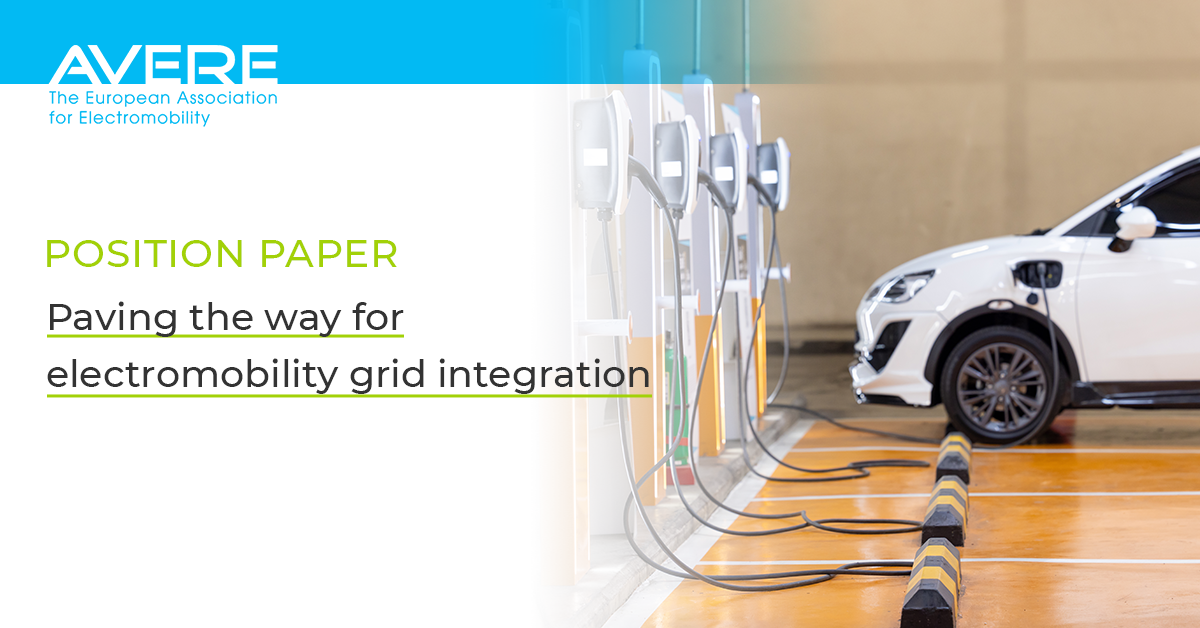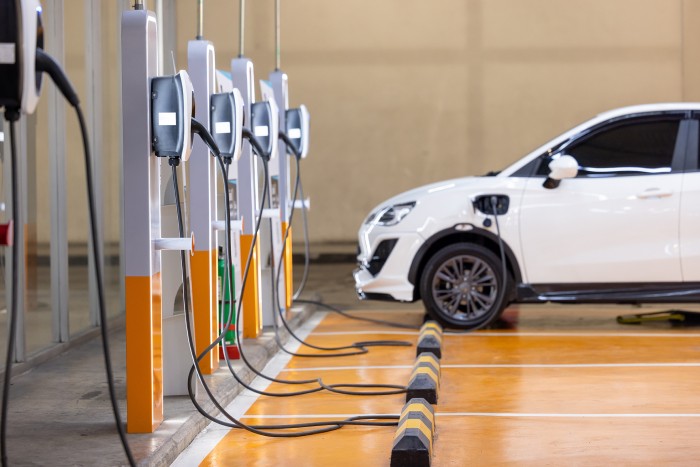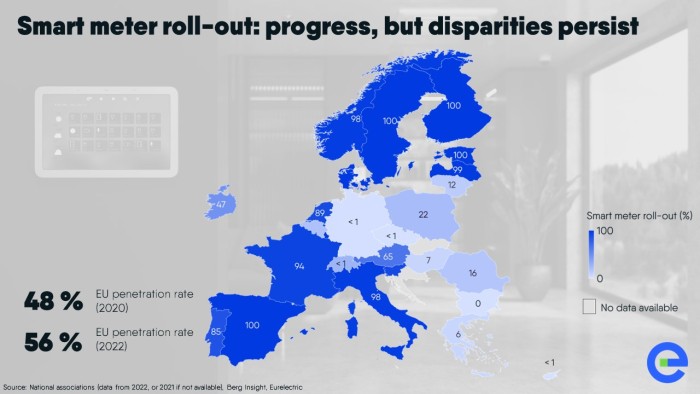
AVERE welcomes the EU Action Plan for Grids, which demonstrates a willingness to put forward proposals to solve the grid problem. Although the EU Action Plan is a first step in addressing the challenges with European grids, it will not suffice to expand, digitalise and better use EU electricity transmission and distribution grids.
POSITION PAPER
Paving the way for electromobility grid integration

For decades, electricity has been the backbone of our society. With the uptake of electric vehicles (EVs), this is going to be even more important as EVs will be the strongest contributor to decarbonising the transport sector. To enable the easy movement of EV owners across Europe, charging station operators have begun to roll out a dense network of charging stations. However, this ambition for rapid deployment is delayed by the slow grid connection processes, from lead time to location feasibility. While we acknowledge that network operators are under intense pressure from the various sectors in transition to electrification and that end-users need to be more flexible, the electromobility sector cannot take on the full responsibility and pressure of deploying a dense network of charging stations without the assurance that our grid is ready. According to the Commission’s estimation, grid investments in Europe needs to rise to EUR 584 billion a year if we are to meet the targets set by the EU Action Plan for energy systems[1] according to the International Energy Agency[2].
We, thus, welcome the EU Action Plan for Grids, which demonstrates a willingness to put forward proposals to solve the grid problem. Although the EU Action Plan is a first step in addressing the challenges with European grids, it will not suffice to expand, digitalise and better use EU electricity transmission and distribution grids. To begin, the EU Action Plan fails to put forward concrete measures for the Member States to implement national actions at their system operators. Moreover, the actionable insights are relatively late as it sets a timeline of 18 months for the implementation. Finally, it is a serious concern that the EU Action Plan does not introduce any accountability measures for its set of 14 actions. In light of the review of the EU Action Plan for Grids, the following paper aims to contribute to it by recommending actions that will reinforce the synergies between the electromobility and energy sectors, accelerate grid connection procedures and increase the flexibility of the grid.
1. Implement existing legislation to support grid development
It is important to implement existing European legislation correctly to support our grid. National governments must fulfil their responsibilities for the deployment of alternative fuel infrastructure in a timely manner, based on existing European legislation such as the Renewable Energy Directive (RED) and the Alternative Fuels Infrastructure Regulation (AFIR). However, the implementation of these legislations will not be sufficient as the grid has not been considered a priority in both legislations, even though it remains a major obstacle to the implementation of the objectives of these legislations.
While national governments should strictly enforce the deadlines set by the RED for the permitting procedures for renewable energy projects and their connection to the grid, the European Commission should ensure that Member States include measures to remove possible barriers to the planning, permitting, supply and operation of alternative fuels infrastructure in their national policy frameworks as outlined in the AFIR. The Commission’s infringement procedures should be strictly followed for the Member States which have been delaying a timely transposition of the RED into their national laws. Rapid transposition of RED III will also benefit grid operators, who will be able to plan ahead for the integration of renewable energies and the development of electromobility thanks to increased transport targets.
The Electricity Directive is another key piece of European legislation for the development of demand flexibility, an essential aspect that must go hand in hand with grid upgrades. It is important that all Member States finally transpose the provisions of the Electricity Directive into their national legislation and start the implementation. Although it came into force in 2019, some Member States still do not have regulatory frameworks in place for smart meters and the data management provisions of the Electricity Directive (see the map below). This is a major obstacle to achieving the EU's climate objectives.

Eurelectric, Power Barometer 2023, https://powerbarometer.eurelectric.org/.
Our main recommendations:
- Implement existing EU legislation to support grid development
- Remove all barriers to planning, permitting, procuring and operating alternative fuels infrastructure in line with the EU legislation
- Define an action plan to speed up grid upgrades
- Define an action plan to reduce lead times for grid connection requests on the national level
2. Accelerate administrative procedures across Europe
Information on existing power supply
Before determining whether a location is suitable for the installation of recharging infrastructure, one first needs to determine the existing power input to a site, the availability of additional power through the existing connections and the cost of securing additional supply if needed. This is because the existing power supply will determine whether recharging infrastructure can be installed immediately at a lower cost or whether an upgrade will be required. Today, most countries do not offer an easy and quick way for third parties interested in installing recharging infrastructure to verify this putting a first hurdle on speedy installation of recharging infrastructure.
Therefore, we suggest that either per distribution network operator (DNO) or as a national scheme, there should be the ability to search online by property location to obtain details of the existing power supply. This would allow one to determine very quickly which sites are eligible for immediate installation of recharging infrastructure, and therefore indicate where it could be quicker and more cost-effective to electrify.
Alternatively, or in the interim, each DNO should be required by the government to have a rapid online power supply request process which has a lower fee than a full quotation request and a maximum of 5 working days response requirement. This should also allow multiple applications to be made in the same request.
Last but not least, details of the power supply to a property should be added as a requirement for all new commercial property sales and leases. This will ensure that potential lessees and owners of commercial property are able to retain power supply information and scrutinise new properties for power availability.
Deployment of charging infrastructure

Once the power input is known, one of the main obstacles to the deployment of recharging infrastructure, particularly for high-power recharging stations, is the lengthy and cumbersome administrative procedures for permitting involved in obtaining a grid connection. Projects sometimes involve multiple authorities and jurisdictions which need to review each project by evaluating their impact on the grid and ultimately approve them. Moreover, if projects are planned in multiple areas at the same time several distribution system operators (DSOs) may have to be approached for every individual project, each with their own administrative procedure, making quick upscaling of recharging infrastructure difficult. Obtaining a grid connection often takes on an average of 12-18 months, but lead times increased already in 2022 towards more than 2 years depending on the region. The result is that charging point operators (CPOs) are applying for as many permits as possible in many locations, so that they can plan ahead and slowly roll out their network of charging stations - a solution that is neither efficient nor sustainable. Moreover, increased lead times towards 2 years, endanger planned deployments under legislation (AFIR) as well as incentive programs (i.e. AFIF) which include a fixed deployment period of 3 years in total.
While we understand that significant delays are a result of different reasons such as the complexity of permitting procedures, overloaded staff in agencies, complex land use change requirements and estimation errors, we argue that administrative procedures for grid connection should be improved if Europe is to reach its road transport zero-emission objectives.
To achieve this, grid operators and regulators need to shift paradigms and move from a reactive planning approach to a proactive planning of the grid. In practice, this means that regulators should develop robust grid planning studies. To give clear direction to the national regulators, the EU should work with the Council of European Energy Regulators and the EU DSO Entity to develop guidelines, and promising practices. Scenario development as outlined in the EU Action Plan for Grids needs to reflect political and industrial trajectories, notably by incorporating climate objectives and linkages with the transport sector. Additionally, grid operators should develop capacity maps to help CPOs identify locations where the grid is ready to connect rapidly new recharging stations, thanks to adequate data sharing. A future-proof planning process should proactively engage relevant stakeholders early in the planning. This would help build a broader vision of the end users’ needs and also increase investor confidence and public trust.
In addition, permitting for the network needs to be accelerated to achieve acceptable and workable lead times for grid connections. Lead times should be decreased to regular permit periods for groundworks and build plans (6 months on average) to fully support the ramp-up of deployments of charging infrastructure. This enables a CPO to potentially shift locations when grid feasibility remains the bottleneck for deployment without losing too much time.

Therefore, we suggest bundling permit impact assessments. For example, concerning bi-directional charging points in several Member States, the permitting agencies will assess the impact of the charging point twice - once to measure its impact when drawing energy from the grid, and a second time to measure its impact when supplying energy to the grid. This procedure needs to be simplified and accelerated to unlock the potential of this technology and bring additional flexibility to the grid. On top of bundling impact assessments, we call on a greater focus on the digitalisation of procedures to speed up approval processes and enhance transparency. In the course of charging network planning, this should entail digitalization and open access to distribution networks to third parties. Moreover, it is vital to digitalise the entire procedure for permitting applications by creating a digital portal to submit and follow up with the applications electronically.
Last but not least, to fully accelerate the roll-out of recharging points needed to achieve our climate goals, AVERE argues that recharging stations above 50kW should be included in the scope of the Council Regulation for permitting (2022/0367/NLE) which introduces faster-permitting processes for certain projects. Recharging points have a high potential to integrate renewable electricity and are the backbone of a smooth roll-out of EVs on our roads.
Our main recommendations:
- Grid operators and regulators should move from a reactive planning approach to a proactive planning of the grid by taking into account political and industrial trajectories
- Establish Pan-European capacity maps to coordinate with CPOs on locations already available to be connected to the grid and proactively plan the grid with third-party stakeholders in conjunction with a standardised and fast approach to understanding the power supply to potential recharging infrastructure locations. This should include an instant online inquiry for third-party stakeholders, or at least a fast-tracked inquiry with a maximum 5 working days response time.
- Include recharging points above 50kW in the scope of the Council Regulation for permitting (2022/0367/NLE)
- Accelerate permitting procedure via a bundling of impact assessments as well as standardised and digitalisated applications with guaranteed response times for final quotations and inquiries for additional information. There also needs to be a harmonized process that allows for multiple applications at the same time.
- Rank and prioritize grid connection requests for all zero-emission technologies, with priority given to e-mobility, battery storage, solar and wind generation.
- Pan-European certification of charging infrastructure
3. Support anticipatory investments, renovation and innovation
Beyond administrative procedures, another lasting obstacle is the lack of anticipatory investment to achieve the electrification targets set as part of the EU’s climate objectives. In order to meet European climate objectives, grid investments need to increase tremendously. Europe has long relied on its existing network, but in recent years investment in the grid has grown steadily and grid congestion has become a recurring trend in many Member States. In Germany alone, congestion management costs reached more than EUR 4 billion in 2022. This situation will have to change if the European grid is to become a more digital and smart grid capable of integrating ever more renewables and meeting the challenge of increased electrification.

Addressing these barriers to grid development will require a mix of responses including policy, leveraging digitalisation, new funding streams, and a new remuneration framework. With regard to the regulatory framework, policymakers should ensure national network planning upon a decent forecast of capacity demand to pinpoint the main priorities for anticipatory investments. Additionally, policymakers can accelerate the progress on grids by creating incentives and funding mechanisms to upgrade and expand the European electricity grid. The current national regulatory framework in the Member States tends to focus on avoiding stranded assets and has therefore failed to capture the risk of insufficient grid development. Adapting the regulatory framework is key to better capture the value that new projects can add and therefore open the possibility of anticipatory investments.
Grid operators have a responsibility to invest in the grid where the market requires upgrade. To support and accelerate this exercise, governments and the European Commission must put forward funding for grid investments which currently sit below the levels needed to achieve the transition and the integration of recharging infrastructure. For this reason, anticipatory investments should support the renovation of existing grids by not being limited to only offshore networks and untapped onshore grids.
Incentive mechanisms can facilitate market parties to equip their grid connection request with a stationary battery in order to:
- Reduce peak (Feed-in/generation as well as consumption)
- Increase efficient self-consumption
- Work on principles to become independent from the grid as much as possible
- Committed participation in congestion management (i.e. % of capacity reserved, time-based power generation, ad hoc support).
Those incentives help market parties to reduce their grid dependency and avoid peak consumption and peak generation. Next to incentives, those initiatives should be classified as priority grid connections, since they are committed to supporting grid stability and can be deployed as a congestion solution.

The scope of EU funding should expand by going beyond the Projects of Common Interest (PCI) and the Projects of Mutual Interests (PMI) to help reinforce trust in the investments to expand and reinforce the grid, but they should also target the digitalisation of the grid to increase efficiency and cybersecurity of the grid. Additionally, funding should not just be limited to the grid but also to bringing additional flexibility and integrating new flexible technologies which will help reduce the need for grid expansion. Funding must be put on the table to renovate and properly maintain the existing grid network. In the EU, more than 50% of the grid has been in operation for over 20 years, which is approximately half of its average lifespan.[3] Maintaining the existing grid is essential to ensure its reliability and safety, and to avoid any power outages that could impact end-users.
Our main recommendations:
- Ensure national investment plans start with a decent forecast of capacity demand to pinpoint where the main priorities for grid investments are
- Provide a regulatory framework which incentivises grid operators to move towards anticipatory investments, yet not only for offshore and untapped onshore projects by including the renovation of existing grids
- Establish funding for a broad range of projects at the EU and national level to incentivise the grid deployment, its digitalisation and its flexibility
- Ensure that cash flows are established to maintain the existing network and make it suitable for the electrification of transport
4. Create enablers to promote grid flexibility
Without prejudice to investment plans for grid expansion and modernization, grid flexibility and congestion solutions should be worked on at the same time. Considering the importance of a balance between grid upgrade and other mechanisms to increase flexibility for reaching the EU’s electrification targets, system operators should propose solutions for grid flexibility only if all of the following conditions are met. First of all, grid investments for expansion and modernization are at a long-term scale while short-term upgrades are not feasible at all. Before proposing flexibility grid connections, system operators should also have called out for market-based solutions to solve grid congestion by means of flexibility services.
In reference to the previous section of this paper, it is clear that grid upgrade is by default needed but some regions can cope with the uptake of electric technologies via flexibility, congestion solutions, battery storage as well as through the recharging infrastructure. Recharging infrastructure has a key role to play to support this flexibility. Smart and bi-directional recharging points are very good examples of the flexibility electromobility brings to the table. However, increasing the use of these technologies needs to be accompanied by incentivising measures pushing end users to adopt these technologies. As part of these incentives, remuneration frameworks should be set up for end-users helping provide flexibility to the grid.
As mentioned above, assessing the impact of vehicle-to-grid (V2G) on the grid is one aspect, but a second aspect is the cost of connecting a bi-directional recharging point to the grid. We argue that the cost of connection to the grid should not fall on the end-user, but should be covered by the grid operator. Indeed, bi-directional recharging points allow electricity to be stored in the vehicles' battery and then injected back into the grid, thus providing flexibility and supporting grid balancing. Bi-directional recharging points and electric vehicles thus provide a service to the grid that should be reimbursed or compensated through at least a free grid connection. Similarly, end-users should be incentivised through rewarding schemes to recharge their vehicles during off-peak hours to reduce power grid congestion.
Providing flexibility and interoperability through recharging points will require the integration of open standards and protocols in the European regulatory framework. Indeed, one crucial aspect of smart charging is the ability of various devices to communicate with each other. The timely implementation of the ACER’s upcoming Network Code on Requirements for Grid Connection of Generators and Network Code on Demand Connection will facilitate the uptake of unidirectional smart charging (V1G) and V2G. Currently, most of the industry relies on OCPP (Open Charge Point Protocol), OCPI (Open Charge Point interface), OCSP (Open Smart Charging Protocol) and ISO15118 (international protocol for communication between car and charging stations). These protocols and standards are essential to create a chain of trust and to enable the wide use of smart and bidirectional recharging. Without these communication tools between the different devices and stakeholders involved in the recharging value chain, providing more flexibility is impossible. The European Union, via CEN-CENELEC currently works on developing its own standards and protocols for communication but we believe that open and internationally accepted standards which have been adopted by the industry and users should be recognised as valid in order to provide the necessary certainty for stakeholders of this value chain to provide the tools to bring the added flexibility to the grid.
Last but not least, beyond the flexibility offered via technologies, it is important to take into account practices such as flexible grid connection which can help grid operators balance the demand. These agreements, which combine fully flexible, time-limited firm connection agreements, can help grid operators to cope with the rise of e-mobility, while at the same time meeting the needs of CPOs by guaranteeing base load capacity at all times and flexible capacity in the event of consumption peaks. This way, the network can be used more efficiently.
Our main recommendations:
- Offer flexible grid connections to solve grid congestion when investments for grid expansion and modernisation are long-term, and if system operators have already exploited market-based solutions by means of flexibility services
- Implement ACER’s upcoming Network Code on Requirements for Grid Connection of Generators and Network Code on Demand Connection quickly in order to facilitate the uptake of V1G and V2G
- Establish a remuneration scheme/market to recognise the flexibility offered by V2G recharging points via a remuneration scheme
- Adopt internationally recognised open standards and protocols (OCPP, OCPI, OCSP and ISO15118)
- Support the uptake of flexible grid connection agreements to use the grid more efficiently
5. Support the upskilling and reskilling of workers to meet our grid targets
Building and management of the grid along with the installation of charging points require a skilled workforce on the side of both operators and regulatory institutions. Currently, the Member States do not have enough blue-collar workers to expand the power grid in time to meet the future energy needs of Europe. The Member States should improve the attractiveness of these jobs by actively publicising and conducting communication campaigns at the national and European levels. The governments should further support the growth of a skilled workforce by implementing reskilling and upskilling programmes. These programmes should provide training on essential skills to fulfil the skills gap in the building and management of the grid, and whose content needs to be created in cooperation with the education institutions and the industries.
In order to boost the technical skills of the current workforce, the European Commission should enhance its financial support to upskilling and reskilling programmes by broadening its Erasmus+ funds for the initiatives where the industry and the educational institutions build synergies to integrate necessary skills required into the curriculum of reskilling and upskilling programmes. Furthermore, European lawmakers should ensure that the scope of the Net Zero Academies designed by the Net Zero Industry Act proposal goes beyond the manufacturing sector by establishing training Academies for upskilling and reskilling of the power grid workforce.
The future of the power grid will be digital therefore the governments should work with the educational institutions and industry to integrate necessary digital skills into the national curriculum. Particularly, the training programs for blue-collar and engineers lack digital skills. In order to address this, the governments should introduce apprenticeships, scholarships and incentive schemes to support the creation of a digitally skilled workforce. Industry can work with educators to incorporate the new technical elements into curricula and work with authorities to introduce new requirements into existing certifications where needed. This will help to expand the eligible certified workforce for the power grid in Europe.
Furthermore, governments should improve the attractiveness of these jobs by actively publicizing and conducting communication campaigns at the national and European levels. The governments should further attract these job positions by implementing reskilling and upskilling programs.
It is not only the blue-collar workforce that is not ready for the future of the power grid in Europe. The workforce in regulatory institutions also lacks the necessary skills to enable Europe’s green energy transition. The governments should support their upskilling through rigorous on-the-job training programmes. Upskilling programmes for government officials would be particularly crucial as upskilling minimises the transaction costs for expanding the eligible labour force. We believe that a skilled workforce in regulatory institutions will help to smoothen the administrative processes for the expansion and management of the power grid.
Our main recommendations:
- Attract new talent to the jobs for building and managing the power grid by actively publicising and conducting communication campaigns
- Support upskilling and reskilling of the workforce via training academies and programmes
- Integrate digital skills training into the national curriculum in order to prepare European youth for the jobs of the future
[1] European Commission, Digitalising the energy system - EU action plan, https://eur-lex.europa.eu/legal-content/EN/TXT/PDF/?uri=CELEX:52022DC0552.
[2] IEA, Smart Grids, https://www.iea.org/energy-system/electricity/smart-grids.
[3] IEA, Electricity Grids and Secure Energy Transitions: Enhancing the foundations of resilient, sustainable and affordable power systems, https://iea.blob.core.windows.net/assets/70f2de45-6d84-4e07-bfd0-93833e205c81/ElectricityGridsandSecureEnergyTransitions.pdf.
